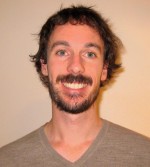 Earlier this year, we welcomed the very first cohort of Sport and Exercise Science students to the FMS here at Newcastle University. With their arrival, so came pertinent questions about how they will contribute to society once they graduate. And so despite the threat of man-eating sharks, spiders as big as your hand and the odd drop-bear, I ventured to the East coast of Australia on a fact finding mission: namely, to explore the career pathways of Australian Sport and Exercise Science graduates. This is because Australian universities have an excellent reputation for producing high-quality Sport and Exercise Science graduates who work in clinically-based contexts.
Earlier this year, we welcomed the very first cohort of Sport and Exercise Science students to the FMS here at Newcastle University. With their arrival, so came pertinent questions about how they will contribute to society once they graduate. And so despite the threat of man-eating sharks, spiders as big as your hand and the odd drop-bear, I ventured to the East coast of Australia on a fact finding mission: namely, to explore the career pathways of Australian Sport and Exercise Science graduates. This is because Australian universities have an excellent reputation for producing high-quality Sport and Exercise Science graduates who work in clinically-based contexts.
My first stop saw me present at the International Society of Biomechanics World Congress in Brisbane. The presentation focussed on some collaborative work (a big thanks to Naomi Oosman-Watts from the Careers Service) on graduate destinations of UK Sport and Exercise Science graduates over the past decade. The questions and conversations that followed highlighted that universities worldwide are facing the same increasing pressures as we are to help students find meaningful employment, although there exists a wide variety of potential solutions with varying degrees of success.
The second part of my trip Down Under included visits to several key figures at leading universities, sporting institutes and the national industry body, Exercise & Sport Science Australia. The most striking difference between the Australian system and most of the world (including the UK) is the clear pathway Australian graduates have into clinical-based practice, particularly for graduates working as registered Exercise Physiologists within the national healthcare system. The regulatory framework that allows this to occur took over a decade to be established but now provides a huge benefit to graduates because they have well-defined pathways to employment and the focus on clinical-based destinations addresses a well-defined need within the community with respect to rehabilitative and preventative medicine. However, associated changes to the university curriculum so students can become registered for clinical-based work has led to fewer students obtaining the knowledge and skills to contribute to the high performance sport industry, much to the chagrin of sporting academies and institutes.
I thank the ERDP for helping fund these visits following the conference because they yielded valuable insights will help us guide and provide appropriate careers advice and opportunities to our Sport and Exercise Science students. Yet questions often beget more questions: Should we focus on Sporting or Clinical graduate destinations for our students here at Newcastle? And if we adopt an Australian-style curriculum so that our students contribute to the rehabilitative and preventative medicine needs of our community – will the NHS and other regulatory bodies be ready for them?
Dr Brook Galna
DPD of the Sport and Exercise Science Programme
